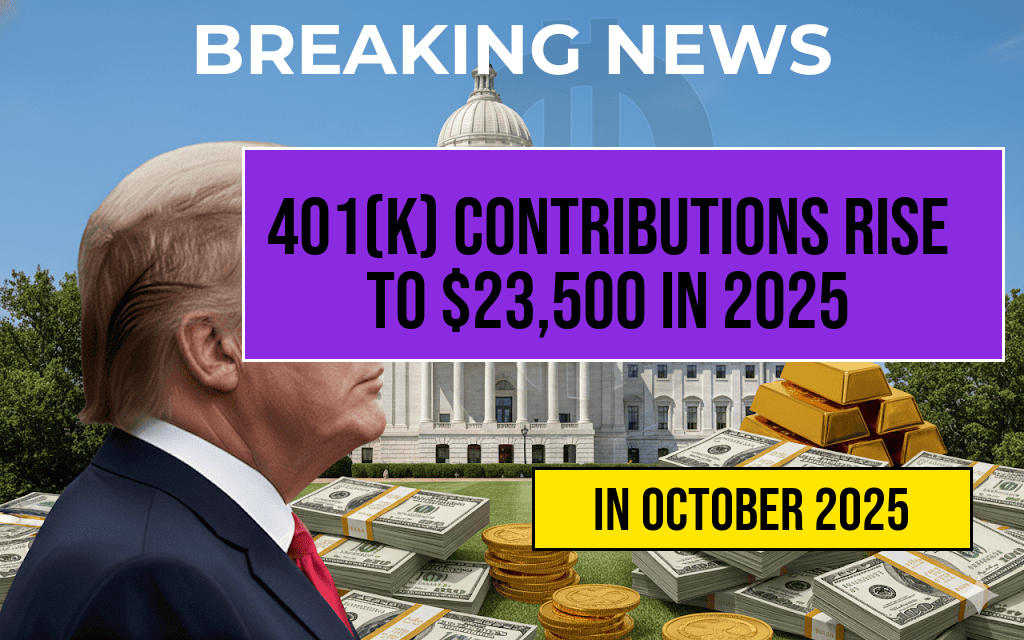Starting in 2025, employees will have the opportunity to increase their annual 401(k) contributions to a maximum of $23,500, up from the current limit of $22,500. This adjustment comes as part of the annual inflation-related increases mandated by the Internal Revenue Service (IRS), aimed at helping workers save more for retirement. The increase in contribution limits is particularly significant as many Americans face the challenges of rising living costs and an uncertain economic landscape. By enabling higher contributions, the IRS is providing a valuable opportunity for individuals looking to enhance their retirement savings, which is crucial given the increasing life expectancy and the need for a more robust financial cushion during retirement.
Understanding the Contribution Increase
The IRS adjusts contribution limits each year based on increases in the cost of living. For 2025, the limit for employee contributions to 401(k) plans will rise by $1,000, reflecting ongoing inflation pressures. This change not only encourages employees to save more but also aims to keep pace with the growing financial demands of retirement.
What This Means for Employees
The increase in contribution limits allows employees to put aside more tax-deferred income, which can significantly enhance their retirement savings over time. For those who can afford to maximize their contributions, this adjustment offers an important tool to grow their savings faster. Here are some key points to consider:
- Long-Term Savings Growth: Contributing the maximum amount can lead to substantial growth in retirement accounts due to compounding interest.
- Tax Benefits: Contributions to 401(k) plans reduce taxable income, providing potential tax savings.
- Employer Matches: Many employers offer matching contributions, which can further amplify retirement savings.
Retirement Planning Strategies
With the increased contribution limit, employees should consider revisiting their retirement planning strategies. Here are some actionable steps to maximize the benefits of the new contribution limits:
- Assess Your Financial Situation: Review your budget to determine how much you can comfortably contribute without straining your finances.
- Set Clear Retirement Goals: Define what you hope to achieve by retirement age and how much you will need to save accordingly.
- Utilize Employer Resources: Many employers provide tools and resources for employees to better understand their retirement plans and contribution options.
Potential Risks and Considerations
While increasing contributions can be beneficial, employees should also be aware of potential risks. These may include:
- Market Volatility: Investments in 401(k) plans are subject to market risks, which can affect the value of retirement savings.
- Liquidity Needs: Higher contributions may limit available cash for immediate needs, which could pose challenges in emergencies.
Conclusion
The IRS’s decision to raise the 401(k) contribution limit to $23,500 in 2025 is a positive development for employees aiming to secure their financial futures. By taking advantage of this increase, individuals can enhance their retirement savings and better prepare for the years ahead. As inflation continues to impact personal finances, leveraging these higher contribution limits may prove crucial for achieving long-term financial goals.
| Year | Employee Contribution Limit | Catch-Up Contribution (Age 50+) |
|---|---|---|
| 2024 | $22,500 | $7,500 |
| 2025 | $23,500 | $7,500 |
For more information about retirement savings and financial planning, you can visit IRS or check out resources from Forbes.
Frequently Asked Questions
What is the new contribution limit for 401(k) plans in 2025?
The new contribution limit for 401(k) plans in 2025 is $23,500, allowing employees to save more for retirement.
How does the increased contribution limit benefit employees?
The increased contribution limit helps employees grow their retirement savings more rapidly, providing greater financial security in their golden years.
Are there any changes to catch-up contributions for older employees?
Yes, employees aged 50 and older may still be eligible for catch-up contributions, which allow them to contribute additional funds beyond the standard limit.
Can employees change their contribution amounts at any time?
Generally, employees can adjust their 401(k) contribution amounts at any time, but they should check with their employer for specific rules and procedures.
What should employees consider before increasing their 401(k) contributions?
Employees should assess their overall financial situation, including monthly expenses and savings goals, to determine if increasing their 401(k) contributions is feasible.

Leave a Reply